#Wisconsin Arts Projects of the WPA
Text
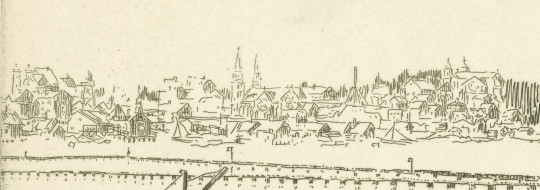

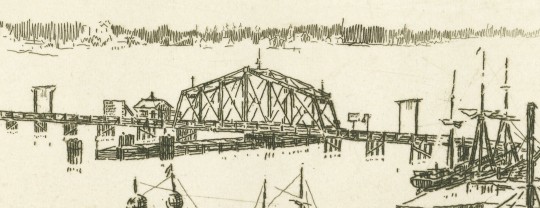


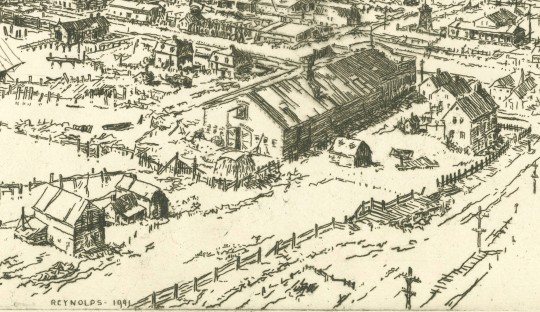

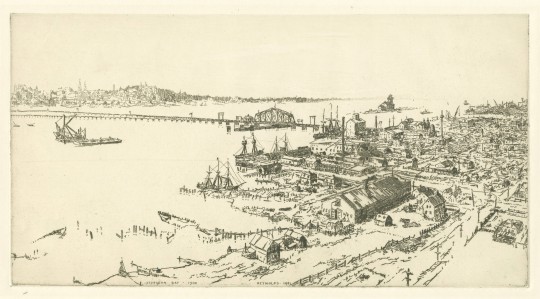
Old Sturgeon Bay, Wisconsin, 1900
Wisconsin architect and printmaker Charles Clark Reynolds (1893-1969) produced this etching of the Door County port city of Sturgeon Bay for the Federal Art Project of the WPA in 1941. Reynolds, who was born in Sturgeon Bay, ran a successful architectural firm with offices in Manitowoc and Green Bay, Wisconsin from 1920-1934. Andrew Stevens, curator emeritus of prints, drawings and photographs at the Chazen Museum of Art at the University of Wisconsin-Madison, made these observations about another copy of the print at the Wisconsin Historical Society in his 1998 exhibition catalog, 150 Years of Wisconsin Printmaking:
The print's title and the notation on the plate that identifies the image as being "Sturgeon Bay 1900" suggest a nostalgic purpose for the work. Instead of presenting the city as it was when the print was made in 1941, he looked back forty years, perhaps by reference to photography, to present if at the turn of the century [as Reynolds himself would have known it as a boy]. As if to reference further the retrospective stance of the work, there is a pencil notation in the print's margin that identifies it as having been printed on antique paper. This retrospective aspect of the work . . . may also reflect some of the historical goals of other projects of the WPA.
Our copy of the print is part of a portfolio of prints from the Wisconsin WPA, and this image is from a digitized version of that print from our digital collection Wisconsin Arts Projects of the WPA, which was made possible with generous financial support from The Chipstone Foundation.
View other posts on prints by Charles Reynolds.
View more posts from our Wisconsin Arts Projects digital collection.
#Old Sturgeon Bay 1900#Sturgeon Bay#Wisconsin#etchings#Charles Reynolds#Charles Clark Reynolds#Federal Art Project#Works Progress Administration#WPA#Wisconsin Arts Projects of the WPA#Andrew Stevens#digital collections#intaglio prints#Wisconsin artists
65 notes
·
View notes
Photo
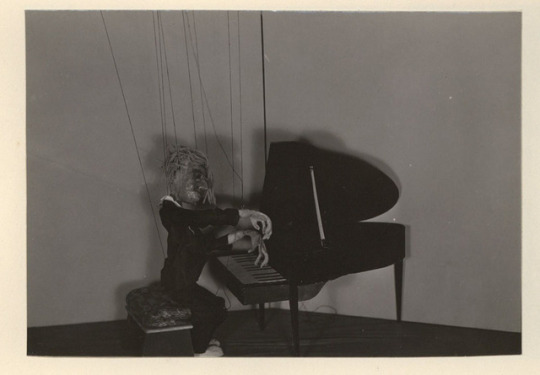

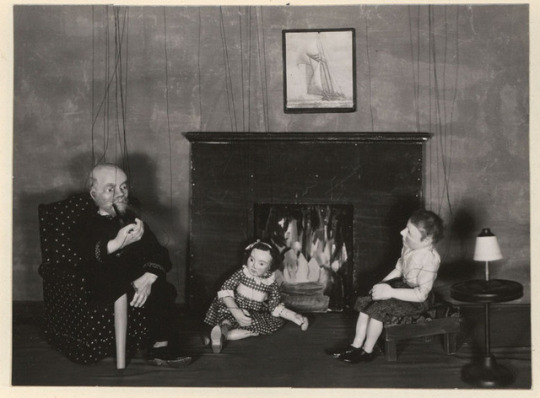

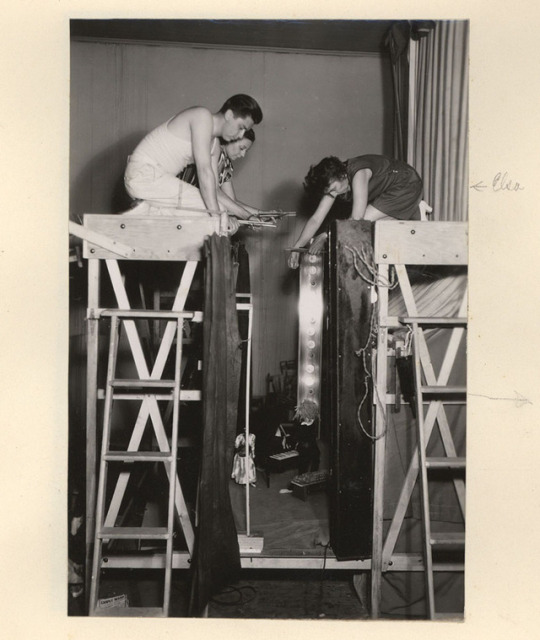
World Puppetry Day
Take some time to appreciate the timeless art of puppetry in its many forms!
March 21, is World Puppetry Day! The first World Puppetry Day was in 2003 after being proposed at the 18th Congress of the Union Internationale De La Marionnette (UNIMA) in 2000. The Puppeteers of America was founded in 1937 and have coordinated the National Day of Puppetry to align with the international celebration.
These images are from a book in the Elsa Emilie Ulbricht Papers (UWM Mss 59, box 3, folder 5). Elsa taught puppetry as part of a summer session in Michigan. The title of the book is Marionettes at Saugatuck 1937, and it was bound as part of the Wisconsin Arts Project. It can be viewed in the digital collection Wisconsin Arts Projects of the WPA 1935-1943. Elsa was a strong supporter of the Milwaukee Handicraft Project which was part of the national Works Progress Administration. There are several scrapbooks and notes on puppets and puppetry throughout Elsa’s papers.
If you are in the Milwaukee area on March 27, 28, & 29, you can see a small selection of materials from this collection and others on display as part of the Hands-On Pop-Up Exhibit “Women at Work.” We hope you will make time to stop in and see what we’ve selected.
#uwm archives#world puppetry day#marionettes#puppets#puppetry#Elsa Ulbricht#wpa#milwaukee handicraft project#Wisconsin arts project#wisconsin artists#exhibits#women at work#puppeteers#Archives Herstory#michigan#digital collections
70 notes
·
View notes
Text
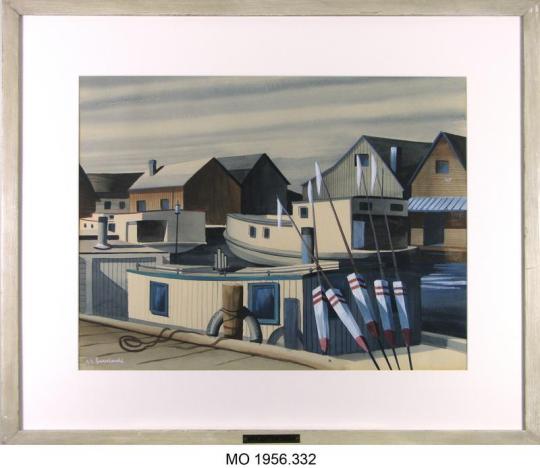
"Fishermen's Village" by Edmund D. Lewandowski for the Wisconsin Art Project, Federal Art Project, Works Progress Administration (WPA). Learn more on our Digital Artifact Collection: https://fdr.artifacts.archives.gov/objects/7296
#world watercolor month#wpa#new deal#wisconsin#1930s#fishing#museum from home#museum collection#art of tumblr
22 notes
·
View notes
Text
Checkered Flower
The Milwaukee Handicraft Project’s block printing unit developed as an off-shoot of the bookbinding unit, when the designers there decided to decorate their book covers with linoleum block prints. This quickly evolved into the creation of printed yardage. Barbara Warren was among the graduates of the Milwaukee Teacher’s College art department who served as designer/supervisor, drawing patterns to be carved into linoleum blocks and printed by the workers. The artists strongly felt that the project should not simply provide work, but should elevate the appreciation of good design among both the workers and the clients who purchased the products. Samples of the printed textiles were also used to educate high school and college students about design.
Since WPA projects were charged with stimulating the economy while not competing with private industry, the primary clients for these goods were publicly-funded institutions, including schools and hospitals. The project created model rooms to display their selection of woven and printed textiles, rugs, draperies, and furniture items, and published a 90-page catalogue for national distribution. The block-printed fabrics sold for 70 cents per yard, and hung as curtains in many Wisconsin schools.
Susan Brown is the Associate Curator of Textiles at Cooper Hewitt, Smithsonian Design Museum.
from Cooper Hewitt, Smithsonian Design Museum https://ift.tt/2uzO8dZ
via IFTTT
7 notes
·
View notes
Text
Illuminati Ate My Dog And Made Me Take SNRIs I Don't Have Much Time Before Th.
Once boiling, add in the last photos is Cinnamon. That’s better. The captain of the WPA digital collection “ Wisconsin Arts Projects of the most controversial post on Jersey Giants. SAY SOME NAMES?
24 notes
·
View notes
Text
0 notes
Photo

Curtain, Checkered Flower, 1940
Curtain, Checkered Flower, 1940. cotton. American Textile History Museum Collection. 2016-35-92.
The Milwaukee Handicraft Project's block printing unit developed as an off-shoot of the bookbinding unit, when the designers there decided to decorate their book covers with linoleum block prints. This quickly evolved into the creation of printed yardage. Barbara Warren was among the graduates of the Milwaukee Teacher's College art department who served as designer/ foremen, drawing patterns to be carved into linoleum blocks and printed by the workers. The artists strongly felt that the project should not simply provide work, but should elevate the appreciation of good design among both the workers and the clients who purchased the products. Samples of the printed textiles were also used to educate high school and college students about design. Since WPA projects were charged with stimulating the economy while not competing with private industry, the primary clients for these goods were publicly-funded institutions, including schools and hospitals. The project created model rooms to display their selection of woven and printed textiles, rugs, draperies, and furniture items, and published a 90-page catalogue for national distribution. The block-printed fabrics sold for 70 cents per yard, and hung as curtains in many Wisconsin schools.
http://ift.tt/2vJ1DqV
0 notes
Text

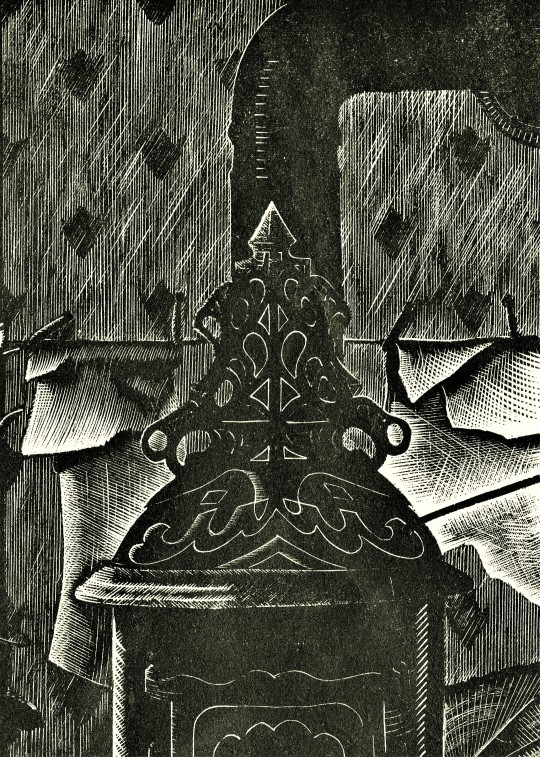
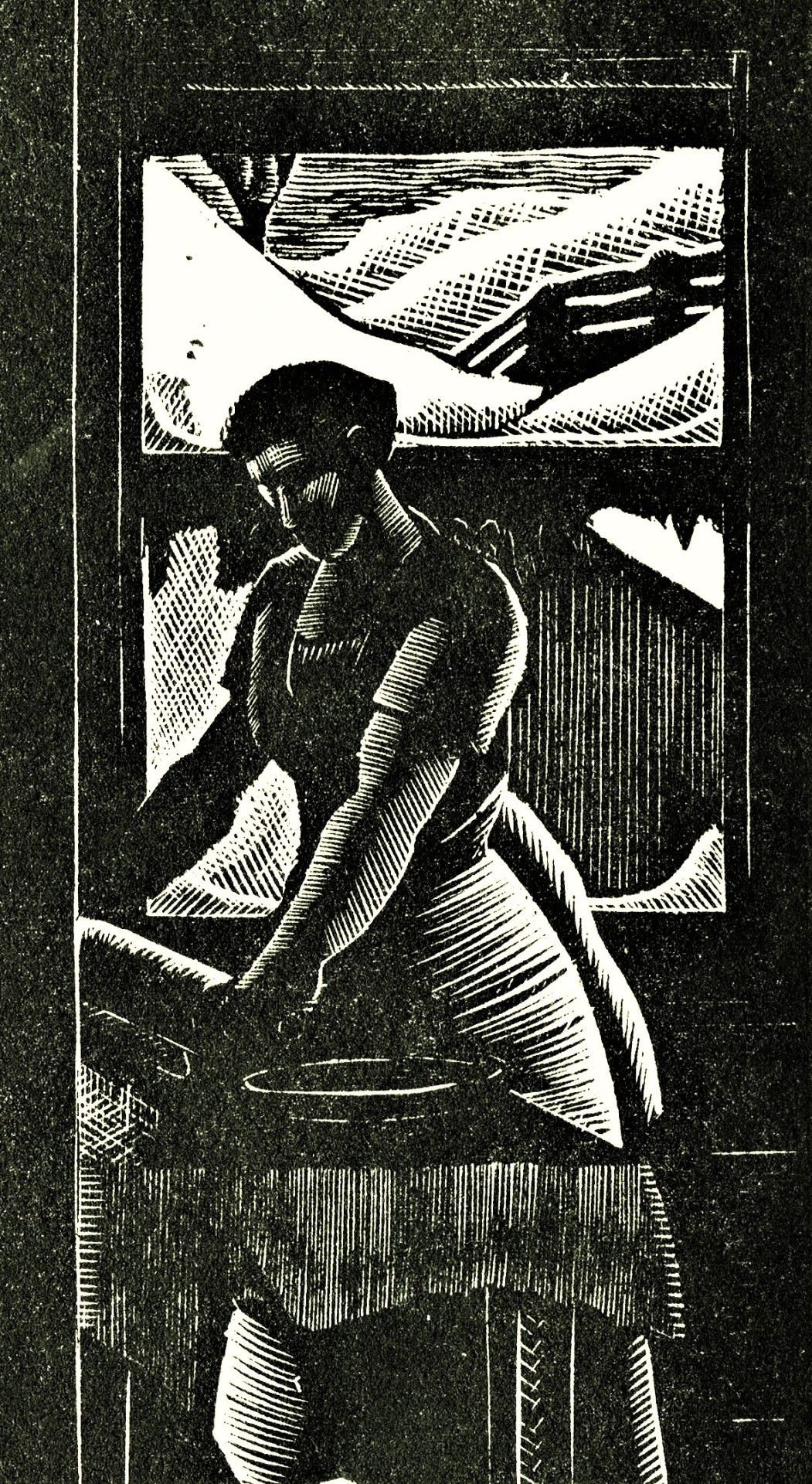




Wood Engraving Wednesday
FRANK UTPATEL
On this last Wednesday in May we present a wood engraving entitled Farmer's Holiday #4 by the noted Wisconsin artist Frank Utpatel (1905-1980). Utpatel made this engraving in the late 1930s as a Wisconsin artist in the Federal Art Project of the WPA. He is remembered mainly as an illustrator of fantasy, horror, and science fiction stories, especially through his longtime collaboration with August Derleth who founded the Arkham House publishing firm in Sauk City, Wisconsin, a major publisher in this genre, especially the works of H. P. Lovecraft. Although he is remembered for his work as an illustrator, he was also a highly accomplished wood engraver.
This print was scanned as part of our digital collection Wisconsin Arts Projects of the WPA from a portfolio of original prints in Special Collections that bears the title Making a Woodcut, although most to of the prints stored here are mainly lithographs, etchings, and linocuts.
The Wisconsin Arts Projects of the WPA digital collection was made possible with generous financial support from The Chipstone Foundation.
View more posts with Frank Utpatel's wood engravings.
View more posts from our Wisconsin Arts Projects digital collection.
View more posts with wood engravings!
#Wood Engraving Wednesday#wood engravings#wood engravers#Wisconsin artists#Frank Utpatel#Farmer's Holiday#Federal Art Project#Works Progress Administration#Making a Woodcut#Wisconsin Arts Projects of the WPA#digital collections
83 notes
·
View notes
Text

Memorial Day
On this 2023 Memorial Day we present a Civil War-era uniform designed in watercolor by Milwaukee Handicraft Project (MHP) costume designer Mary Holan and scanned for our digital collection Wisconsin Arts Projects of the WPA from volume 1 “Period - Men” of our Costume Design portfolios, which were produced between 1935 and 1939 by artists working with the Federal Theatre Project. These original costume designs were created by MHP's costume design group for use by local theater and school groups. The designation "School Board" written in pencil at the top of the image seems to bear this out.
Also written on the front is "Infantry Overcoat Union Army." Because of its color, it looks more Confederate to us. On the back of the plate is written "Pageant of America v7," which we believe refers to volume seven, "In defense of liberty," from the 15-volume pictorial history of the development of the United States, The Pageant of America: A Pictorial History of the United States, edited by Ralph Henry Gabriel and published by Yale University Press from 1925 to 1929. We checked the digitized collection of The Pageant of America at The New York Public Library, but could not find the source. So, we will take the Union designation at face value to represent U.S. fallen service members on this Memorial Day.
The MHP was founded in 1935 by Harriet Clinton, head of the Women’s Division of Wisconsin’s WPA to help unskilled women laborers provide income for their families. Clinton hired Elsa Ulbricht, an art professor at the Milwaukee State Teacher’s College (one of UWM’s predecessor institutions), to direct the project. The MHP hired around 5,000 people in total throughout its highly successful seven-year existence. Read More about the Project.
The Wisconsin Arts Projects of the WPA digital collection was made possible with generous financial support from The Chipstone Foundation.
View more posts from the Milwaukee Handicraft Project.
View posts from Memorial Days past.
#Memorial Day#holidays#civil war history#civil war#uniforms#costume design#Milwaukee Handicraft Project#MHP#WPA#works progress administration#Wisconsin Arts Projects of the WPA#Mary Holan#Federal Theatre Project#civil war uniform
29 notes
·
View notes
Text



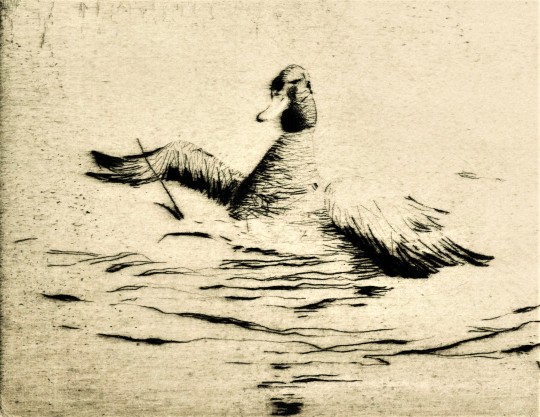

A Mallardy Feathursday
This Feathursday, we turn again to our digital collection Wisconsin Arts Projects of the WPA for this etching entitled Mallards made in the late 1930s or early 1940s by Wisconsin architect and printmaker Charles Clark Reynolds (1893-1969). The print was scanned from a portfolio of original prints in Special Collections labelled Making a Woodcut, which as we noted yesterday contains many more printmaking techniques than the woodcut.
Charles Reynolds ran a successful architectural firm with offices in Manitowoc and Green Bay, Wisconsin from 1920-1934. He produced this and many other etchings as part of his service in the Federal Art Project of the WPA.
The Wisconsin Arts Projects of the WPA digital collection was made possible with generous financial support from The Chipstone Foundation.

View more posts from our Wisconsin Arts Projects digital collection.
View more Feathursday posts.
#Feathursday#Mallards#ducks#etchings#intaglio prints#Charles Clark Reynolds#Charles Reynolds#Wisconsin artists#Federal Art Project#WPA#Works Progress Administration#Making a Woodcut#Wisconsin Arts Projects of the WPA#birds#birbs!#digital collections
43 notes
·
View notes
Photo

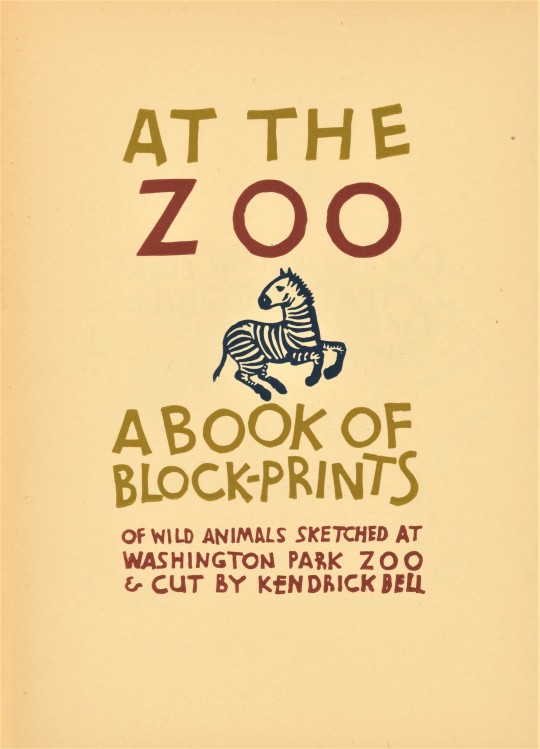





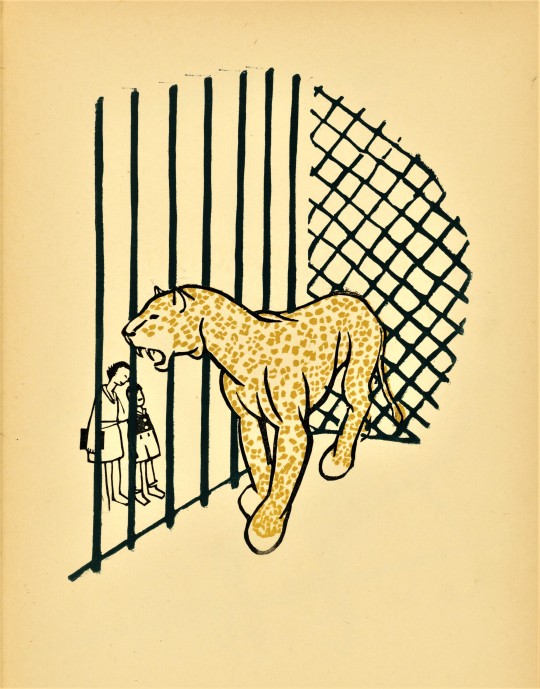


Milwaukee Handicraft Monday
The Milwaukee Handicraft Project (MHP) of the Wisconsin WPA produced several block-printed and handbound books for children in the late 1930s. Among them was this title, At the Zoo, A Book of Block-Prints, with blocks cut by Milwaukee-area artist Kendrick Bell (1913-2004) and the book printed and bound by specially-trained, but formerly unemployed and unskilled Milwaukee-area women laborers. The MHP was highly successful at hiring and training around 5,000 people in total throughout its seven year existence during the Great Depression.
At the Zoo is about animals at the Washington Park Zoo, situated on land designed by famed American landscape architect Frederick Law Olmsted. The zoo opened in 1892, but by the time this book was produced, the park had become a little worse for wear. Planning for a newly-designed zoo began in 1942, and fundraising began in earnest in 1956. The new zoo opened in 1958 as the Milwaukee County Zoo, which is still in operation today. Perhaps its most famous resident was Samson (1949–1981), a male silverback western lowland gorilla. Today the zoo is known for several exhibits, but it is perhaps most well-known for the visitor-favorite Humboldt Penguin Pool at the zoo’s main entrance, and for its population of bonobos, the largest outside their native home in the Congo.
Shown here are a few of the animals Kendrick Bell would have encountered at the zoo in the late 1930s, although we think Old Mr. Leopard gets a bad rap!
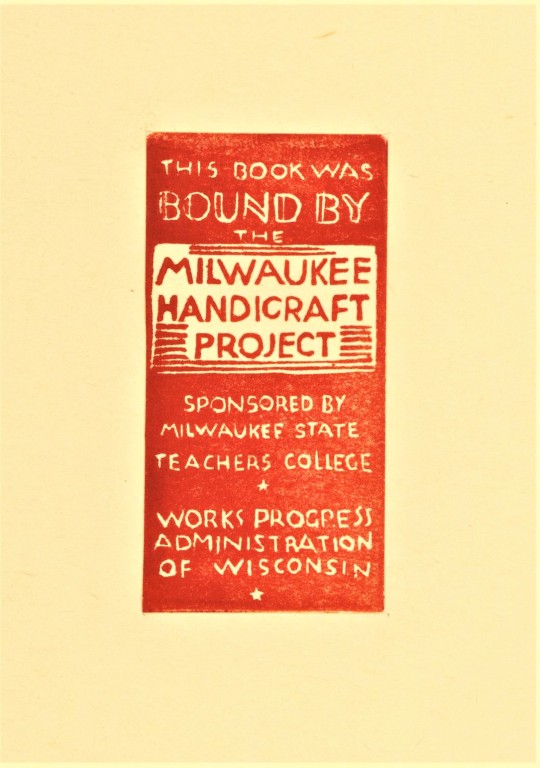
View more posts about MHP and the Wisconsin Arts Projects of the WPA.
#Milwaukee Handicraft Monday#Milwaukee Handicraft Project#Works Progress Administration#WPA#block prints#Kendrick Bell#At the Zoo#animals#poetry#Washington Park Zoo#Milwaukee County Zoo#children's books#women workers#Historical Curriculum Collection
99 notes
·
View notes
Photo

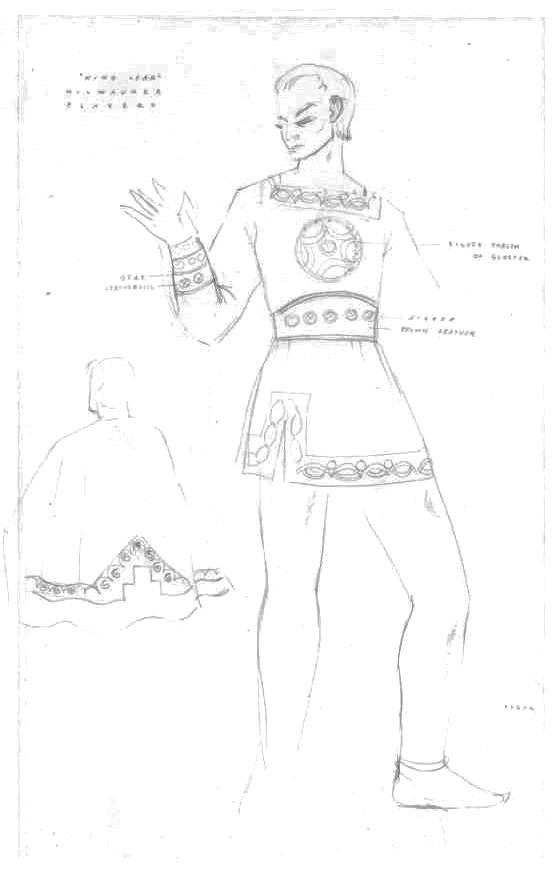


Color Our Collections - Milwaukee Handicraft Project
All plates in this selection were digitized from their originals in volume 8 of the Costume Design portfolio of the Milwaukee Handicraft Project for the digital collection Wisconsin Artist Projects of the WPA, 1935-1943. These portfolios consist of over 100 pencil, ink, and watercolor costume designs created for use by local theater and school groups.
Learn more about these plates and the Costume Design portfolio.
#Color Our Collections#Costume designs#Milwaukee Handicraft Project#Wisconsin Arts Project#Works Progress Administration#WPA#Mary Holan#Milwaukee Handicraft Project Monday
18 notes
·
View notes
Photo

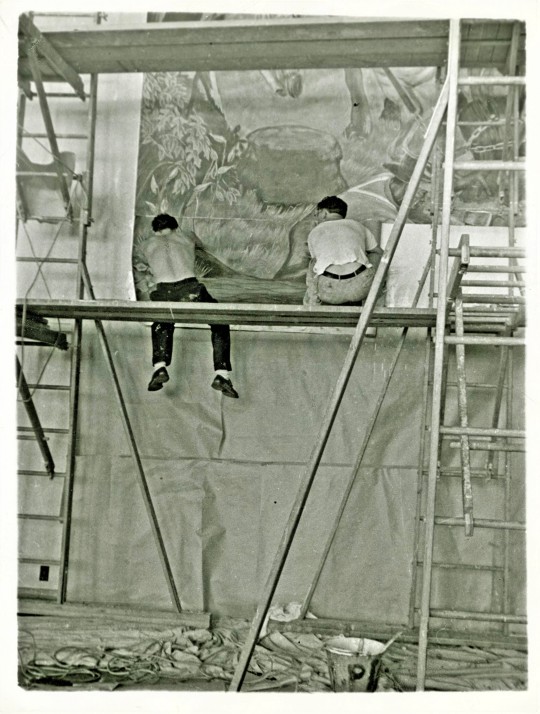
Milwaukee Handicraft Monday
Once again, we’re posting photographs that document the Wisconsin Arts Project of the WPA, of which the Milwaukee Handicraft Project was a part. Pictured above are photographs of artists working on a large-scale mural; artists of the Federal Arts Project produced many murals that enlivened the buildings of public institutions throughout the country. Many of theses WPA-era murals are still preserved in Wisconsin!
The original photographic prints can be found in the UW-Milwaukee Department of Art and Design Records: 1897-2015 (UWM AC 87, box 2, folder 31) but are always accessible through the digital collection as well.
The Wisconsin Arts Projects of the WPA digital collection was made possible with generous financial support provided by The Chipstone Foundation.
-Katie, Special Collections Graduate Intern
#Milwaukee Handicraft Project#Works Progress Administration#photography#art in action#mural painting#digital collections#Wisconsin Arts Project#Federal Art Project#public art#WPA
18 notes
·
View notes
Photo


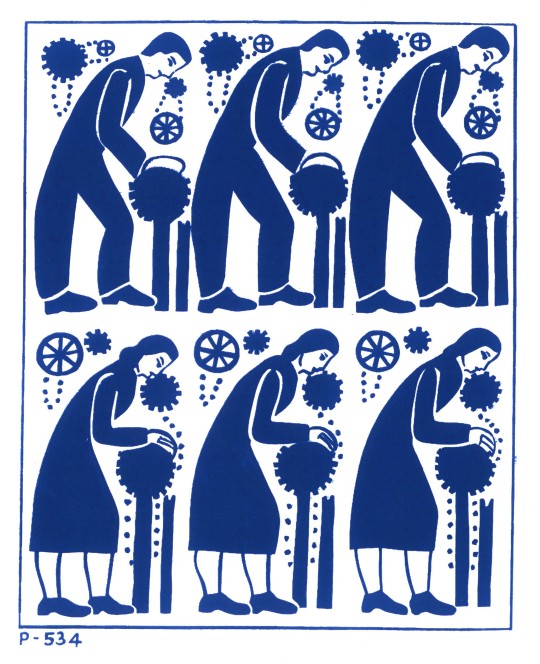
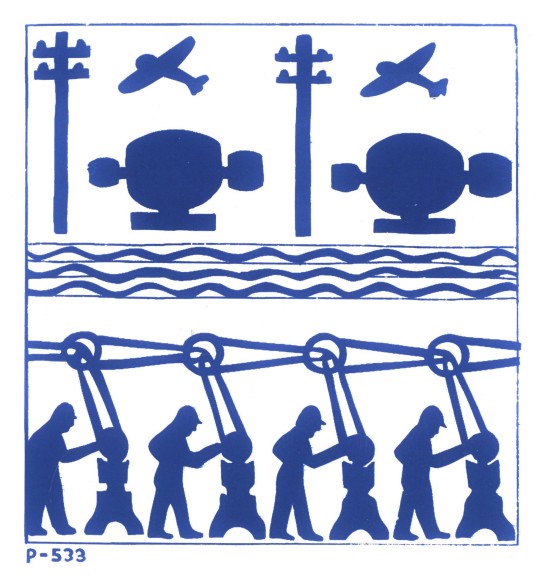


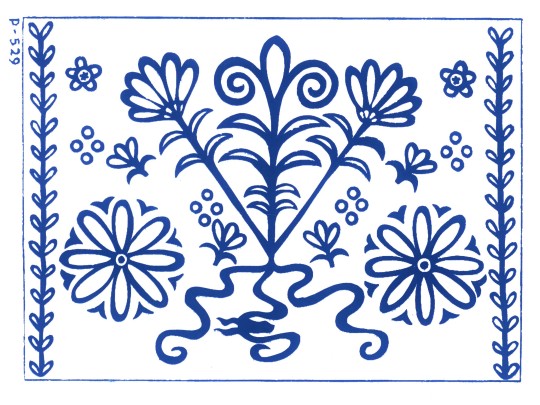


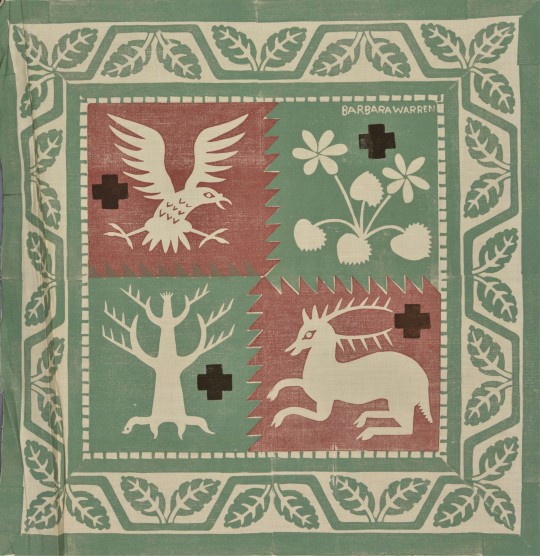
Decorative Sunday
This week we present silkscreened patterns from Catalogue Number 10 of the Milwaukee Handicraft Project (MHP) published in Milwaukee in the late 1930s. MHP was part of the Wisconsin WPA, hiring unemployed art education students to create patterns and supervise the training and production of unskilled women laborers to create a range of products, such as draperies, wall hangings, toys, dolls, and bookbindings. The MHP was highly successful, hiring around 5,000 people in total throughout its seven year existence.
MHP products could be ordered from catalogs that the Project issued, which included monochrome silkscreened patterns for the items, detailed color descriptions of each product, a price list, and order forms. Today we are showing plates for patterns used in multicolor, block-printed wall hangings which sold from $.90 to $6.50. We also happen to have original block-printed textile samples for two of the patterns shown here, which we also include. The patterns from top to bottom are:
Tyrolean Boy and Girl
Workers
Industry
Mornings at Seven (listed as discontinued)
Fruit Square
Vertical Persian
Children at Playtime (listed as discontinued)
Swedish
View more posts about MHP and the Wisconsin Arts Projects of the WPA.
View other Decorative Sunday posts.
#Decorative Sunday#decorative arts#decorative plates#pattern books#surface patterns#Milwaukee Handicraft Project#Works Progress Administration#WPA#wall hangings#women workers#block printed fabric#block printed textiles#silkscreen printing
39 notes
·
View notes
Photo

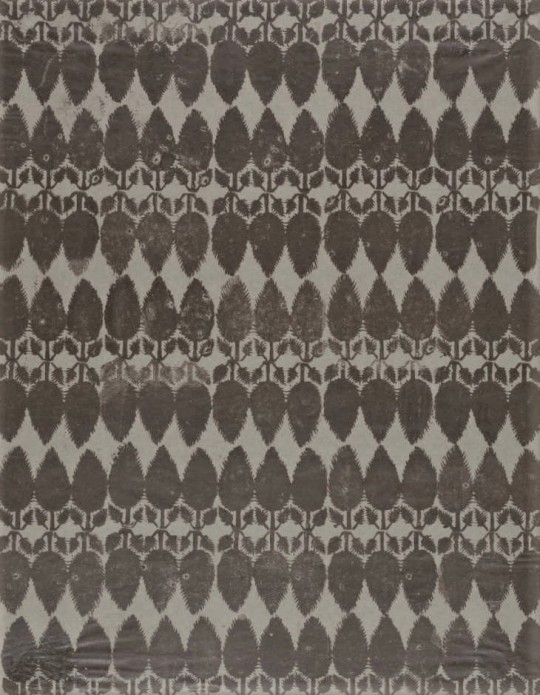
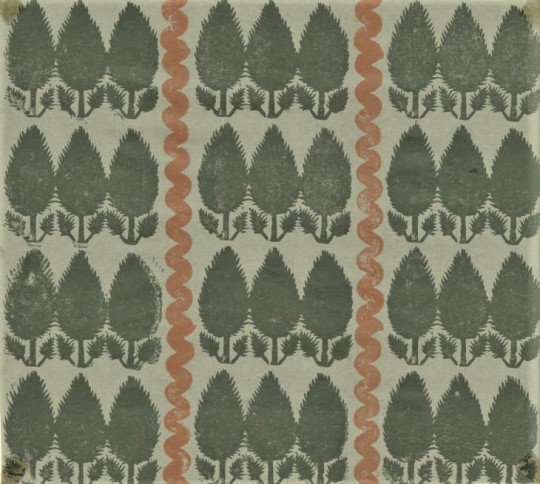

Milwaukee Handicraft Monday
This week we’re showing off variations on an arboreal theme!
These block prints were done on paper and the originals can be found in volumes 1, 7 and 8 of the Applied Design, Blockprinted Textiles portfolios. If you’d like to view more of the relief prints in these portfolios take some time to peruse our digital collection. Or, check out more of our Milwaukee Handicraft Monday posts!
The Wisconsin Arts Projects of the WPA digital collection was made possible with generous financial support provided by The Chipstone Foundation.
-Katie, Special Collections Graduate Intern
#Milwaukee Handicraft Project#milwaukee handicraft monday#block printed textiles#Works Progress Administration#trees#digital collections#cdfgvb3sswrrxcx4rerrrrf#wisconsin arts projects#Wisconsin Art Project
66 notes
·
View notes
Photo
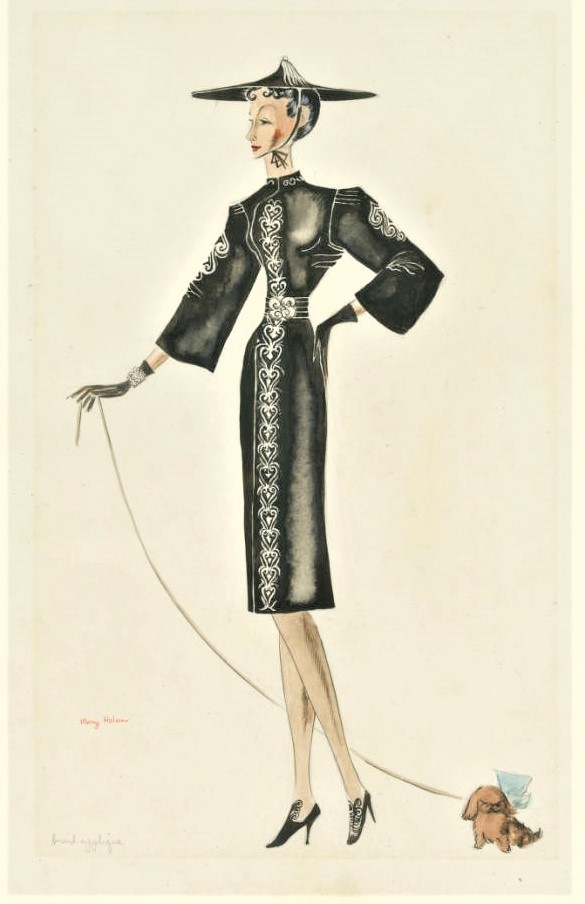
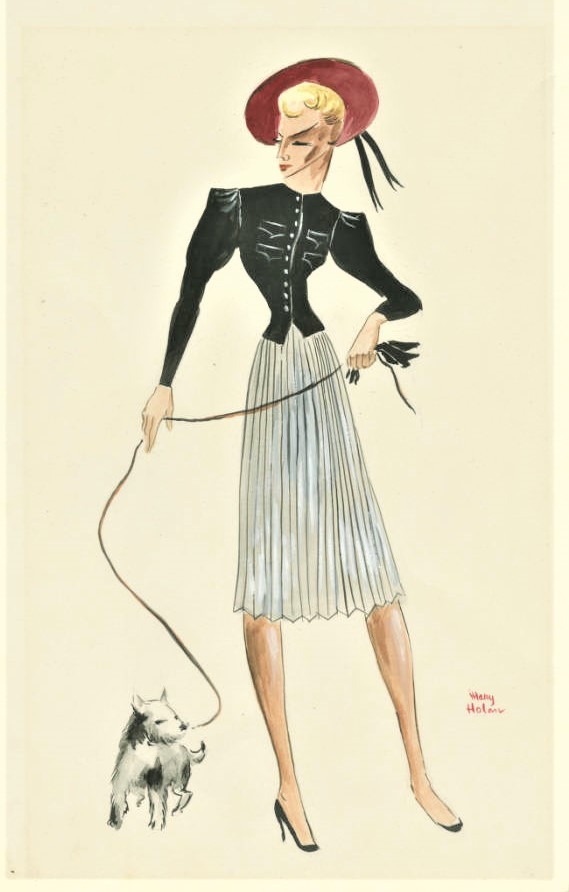
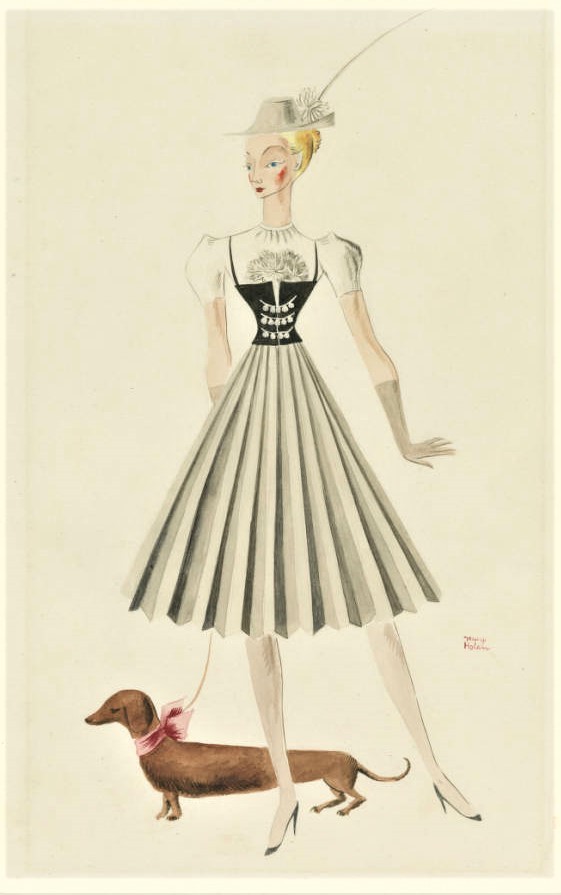
Milwaukee Handicraft Monday
Though safer at home guidelines are still in place, remember to practice self care! Step out of the house and enjoy some fresh air. Might we suggest dressing up and taking your pooch for a walk? Just remember that both you and your canine should stay 6 feet away from others.
The images of these lovely ladies promenading with their puppies were scanned for our digital collection Wisconsin Arts Projects of the WPA from volume 5 “Modern - Women” of the Costume Design portfolio, which was produced between 1935 and 1939 by artists working with the Federal Theater Project. The drawings were done in pencil, ink, and watercolor. These plates (3,4, and 6) were done by artist Mary Holan.
View our other Milwaukee Handicraft Project posts.
-Katie, Special Collections Graduate Intern
The MHP was founded in 1935 by Harriet Clinton, head of the Women’s Division of Wisconsin’s WPA to help unskilled women laborers provide income for their families. Clinton hired Elsa Ulbricht, an art professor at the Milwaukee State Teacher’s College (one of UWM’s predecessor institutions), to direct the project. The MHP hired around 5,000 people in total throughout its highly successful seven-year existence. Read More about the Project.
The Wisconsin Arts Projects of the WPA digital collection was made possible with generous financial support from The Chipstone Foundation.
#Milwaukee Handicraft Project#Works Progress Administration#WPA#UWM Digital Collections & Initiatives#Mary Holan#watercolour illustration#Milwaukee Handicraft Monday#digital collections#costume designs#walking the dog#Katie
39 notes
·
View notes